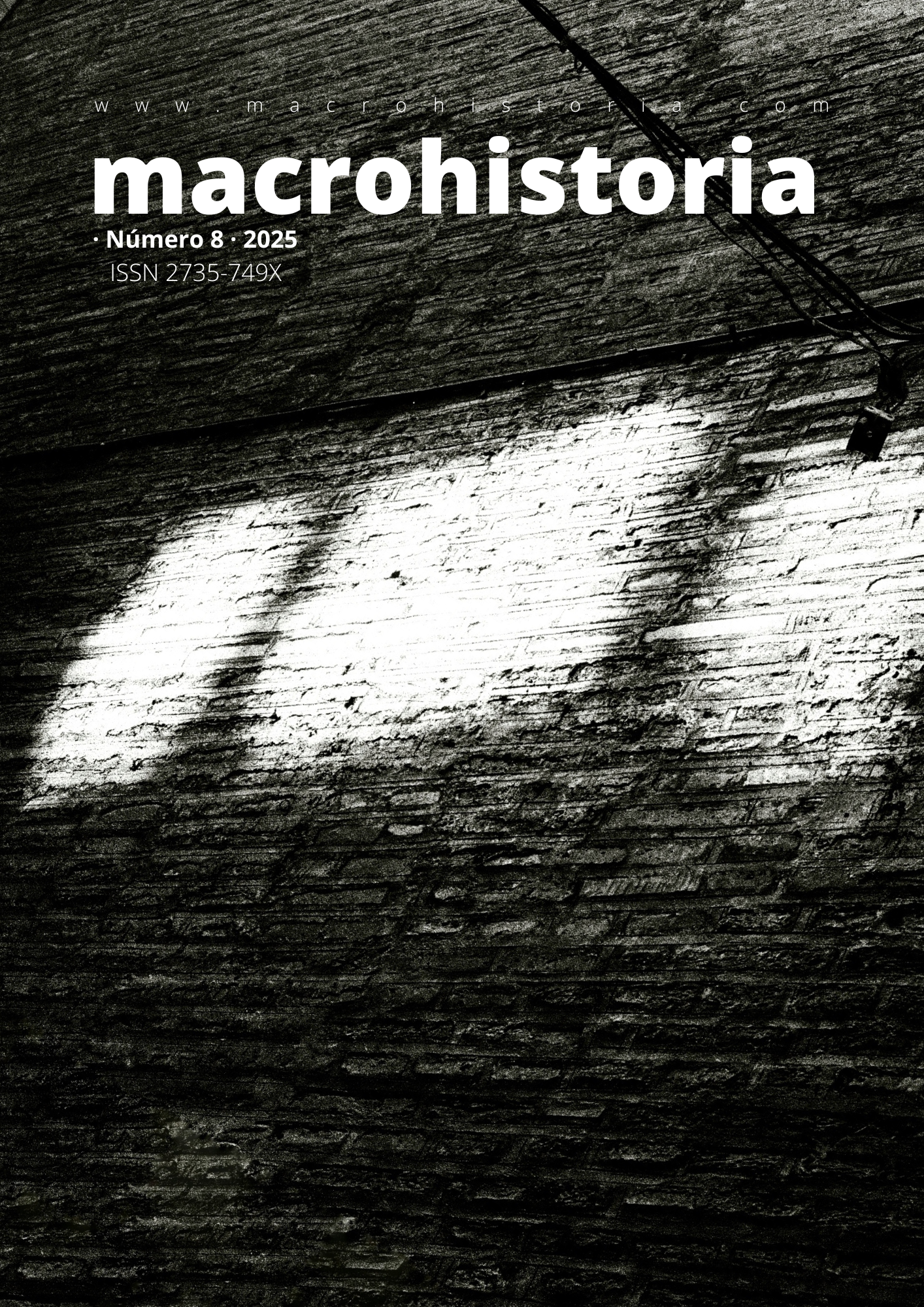Narrative, Metalanguage, and Truth in Historiography: An Analytical Examination of Historical Metanarrative
DOI:
https://doi.org/10.62120/mch.8.86Keywords:
Narrative, Metanarrative, Truth, Metalenguage, HistoriographyAbstract
This paper aims to explain the various functions, challenges, and problems of metanarrative in historiography and its relationship with the concept of truth. It explores the nature of the metalanguage and how historians use it to formulate a metanarrative, establishing a correspondence between events and the content of their narrative (affirmative propositions) about those events. Additionally, it addresses several challenges, such as trauma and the difficulty of representing it in narrative, as well as the need to respect the principle of reality and the ethical imperative in research.
References
Ankersmit, F. (2006). Representación, ''presencia'' y experiencia sublime. Historia y Grafía, 139-172.
Ankersmit, F. (2014). Historia y tropología. Ascenso y caída de la metáfora. México: FCE.
Appleby, J., Hunt, L., & Jacob, M. (1994). La verdad sobre la historia. Barcelona: Andrés Bello.
Batalla, G. B. (1972). El concepto de indio en América: una categoría de la situación colonial. Anales de Antropología, 105-124.
Belvedresi, R. E. (2021). ¿Qué define un acontecimiento histórico? La comprensión del pasado y la vida de las comunidades sociales. Cuadernos de Historia, 25.
Bloch, M. (2010). Introducción a la historia. México: FCE.
Bunge, M. (2009). Semántica II: Interpretación y verdad. Barcelona: Gedisa.
Bunge, M. (3 de Febrero de 2015). «La ciencia es la tentativa de explicar los fenómenos en términos exclusivamente materialistas». (R. Corcho, Entrevistador)
Danto, A. C. (2014). Narración y conocimiento. Buenos Aires: Prometeo.
Dray, W. (2021). Las leyes y la explicación en la historia. Buenos Aires: Prometeo.
Foucault, M. (1993). Las palabras y las cosas. México: Siglo XXI.
Koselleck, R. (1993). Futuro Pasado: Para una semántica de los tiempos históricos. Barcelona: Paidós.
Kuhn, T. (1992). La estructura de las revoluciones científicas. Bogotá: FCE.
LaCapra, D. (2005). Escribir la historia, escribir el trauma. Buenos Aires: Nueva Visión.
LaCapra, D. (2009). Historia y memora después de Auschwitz. Buenos Aires: Prometeo.
Loaiza, G. (2012). Las primeras constituciones de Colombia (1811-1821). Historia y Espacio, 155-177.
Miranda, V. (2024). Historia e ideología. Cali: Universidad del Valle.
Moro, T. (1975). Utopía. Barcelona: Bruguera.
Mudrovcic, M. I. (2005). Historia, narración y memoria. Los debates actuales de la filosofía en la historia. Madrid: Akal.
Quintanilla, M. A. (1985). El concepto de verdad parcial. Theoria, 129-141.
Ricoeur, P. (2015). Historia y verdad. Argentina: Fondo de Cultura Económica .
Schultz, H. (2001). Historia económica de Europa, 1500-1800. Madrid: Siglo XXI.
Suárez Molnar, R. (2007). Explicación histórica y tiempo social. Barcelona: Antrhopos.
Tarski, A. (1977). Introducción a la lógica y a la metodología de las ciencias deductivas. Madrid: Espasa-Calpe.
Topolski, J. (1992). Metodología de la historia. Madrid: Cátedra.
Tugendhat, E., & Wolf, U. (1997). Propedéutica lógica-semántica. Barcelona: Anthropos.
United States Holocaust Memorial Museum. (14 de May de 1946). Affadavit signed by Rudolf Hoess, former commandant of Auschwitz, attesting to the gassing of Jews at the killing center during his tenure. Nuremberg.
White, H. (2019). Metahistoria: la imaginación histórica en la Europa del siglo
Downloads
Published
How to Cite
Issue
Section
License
Copyright (c) 2025 Víctor Elkin Miranda Barreiro

This work is licensed under a Creative Commons Attribution-NonCommercial-NoDerivatives 4.0 International License.
You are free to:
Share — copy and redistribute the material in any medium or format
The licensor cannot revoke these freedoms as long as you follow the license terms.
Under the following terms:
Attribution — You must give appropriate credit , provide a link to the license, and indicate if changes were made . You may do so in any reasonable manner, but not in any way that suggests the licensor endorses you or your use.
NonCommercial — You may not use the material for commercial purposes .
NoDerivatives — If you remix, transform, or build upon the material, you may not distribute the modified material.
No additional restrictions — You may not apply legal terms or technological measures that legally restrict others from doing anything the license permits.



